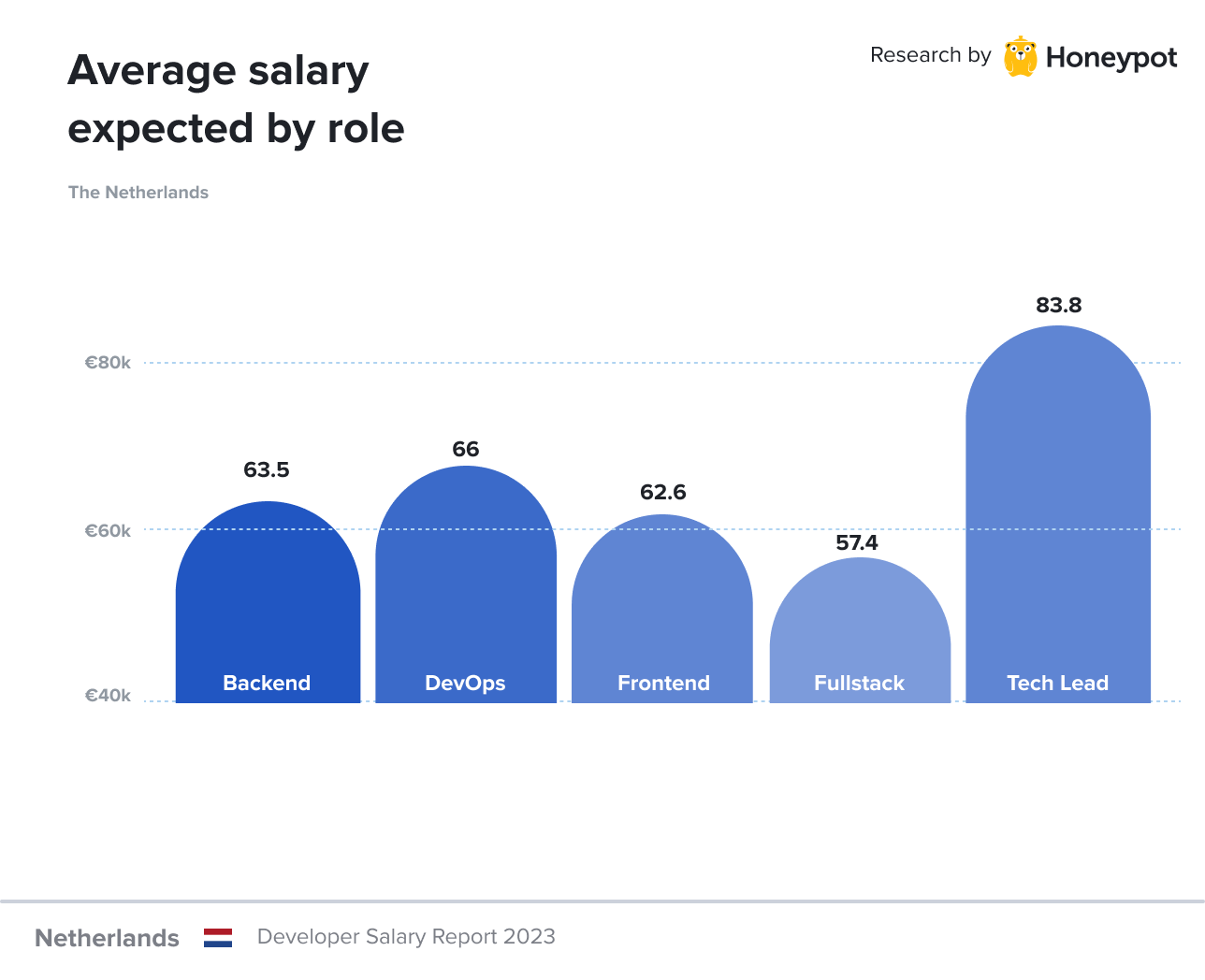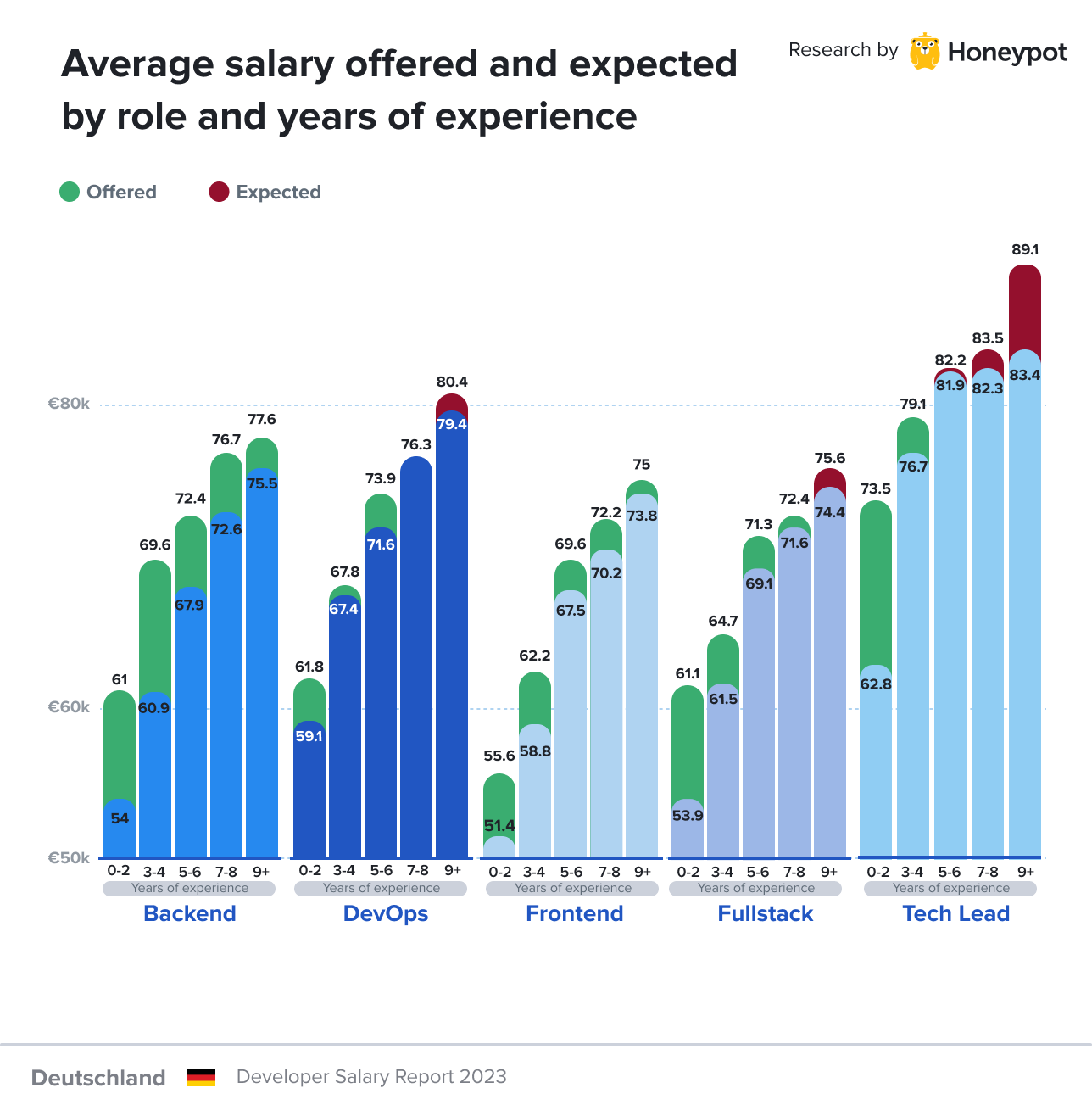
Salary Benchmarking: A Road To Attract And Retain Top Tech Talent in Europe
HR Tips Honeypot
Attracting and retaining top tech talent is no easy feat in today’s bustling job market. But there’s a secret weapon that will help: salary benchmarking.
For the tech teams, salary benchmarking isn’t just handy – it’s vital. It gives you that edge by helping you understand what similar businesses are paying for similar roles. By fine-tuning your own pay scales accordingly, you can make sure you’re offering competitive compensation packages that will keep your team happy and engaged.
First, we’ll cover how exactly salary benchmarking works, and then we’ll dig into the numbers from our latest report, which will help you understand the current European market.
What is salary benchmarking?
Salary benchmarking is a strategic practice that involves comparing the compensation packages of your own organization with those of your competitors or industry standards.
This process is crucial in helping businesses determine competitive salaries and other forms of compensation for their employees.
Particularly in the tech teams, effective salary benchmarking is the hiring manager’s and recruiter’s best tool in attracting and retaining top-tier talent.
Sources to conduct salary benchmarking
There are several different sources to get data for relevant benchmarks. These include:
- Primary sources: Primary sources refer to the direct collection of data, including surveys and interviews.
- Secondary sources: Secondary sources are any existing online or offline resources that contain salary information, such as developer salary reports or government reports.
- Internal comparison: This method involves comparing the salaries of internal staff to determine whether they are paid fairly and in line with industry standards.
No matter which method you choose, the most important thing is to ensure that all of the data is relevant and accurate.
Factors to consider for tech teams’ salary benchmarks
According to SHRM, U.S. organizations are projecting an average budget increase of 4 percent for 2024. Our Developer Salary Report 2023 indicates a similar benchmark, revealing that European developers can anticipate an average increase of 5% from 2022 to 2023.
But creating accurate salary benchmarks for tech teams calls for a nuanced understanding of the sector’s unique dynamics.
A few key factors demand our attention. We’ll use examples from our latest developer salary report to make these factors more clear.
- Company location: The geographical location of your company can significantly influence salary scales. Tech hubs like Berlin or high-income countries like Switzerland, for example, may command higher salaries than smaller cities or remote positions.

- Company size: Your company’s size also matters. Larger firms often have bigger budgets and can offer more competitive salaries. However, smaller companies could provide additional perks like a flexible schedule or a more intimate team environment.

- Type of technology and level of specialisation: The sector your company operates in as well as the type of role you are looking for can also impact salary benchmarks. Roles involving emerging technologies or specialised skills, for instance, might command higher salaries due to their demand and the limited talent pool.

- Years of experience: The experience level of the talent is another critical factor. Seasoned professionals with a proven track record can have very different salary expectations than less experienced or entry-level candidates.

By considering these factors, you will be able to construct more accurate and competitive salary benchmarks for your tech teams.
How to start benchmarking (tech) salaries?
Let’s break salary benchmarking down into manageable steps:
- Identify the key roles in your team and group them. For instance, if we’re talking about a tech team, you can group the roles through classifications such as backend, frontend, and team lead.
- Delve deeper into the role you are benchmarking. This involves gaining a thorough understanding of the job description, from main duties to required qualifications and any specialised skills or experience needed.
- Scope out the job market. After we’ve got a clear image of the role, our task is to find the market average. Look for roles that share similar responsibilities, qualifications, and experience levels in the same location. This will be the foundation for the salary comparison.
- And finally, assemble all this information and understand the Compa Ratio of a position. More on that below.
What is a Compa Ratio and how can it be used?
A Compa Ratio, short for Comparative Ratio, is a valuable tool in the realm of salary benchmarking.
Essentially, it quantifies an employee’s salary as a percentage of the midpoint of a specific pay range. Calculating the Compa Ratio involves dividing the employee’s current salary by the median salary for similar roles in the job market.
For example, a java developer with a Compa Ratio of 1, or 100%, means they are earning precisely at the market median. On the other side, a data analyst with a Compa Ratio of 0.85 is earning 15% less than the median market rate.
This crucial piece of data provides a benchmark to assess how competitive an individual’s or group’s pay is compared to the prevailing market rate.
Armed with this knowledge, organisations can strategically adjust their compensation packages, ensuring they remain an attractive proposition for both their existing developers and potential new hires.
How to compete with a small budget
Even with a limited budget, there are strategies that can help a company compete in the tech industry’s salary race.
A crucial first step is to focus on creating an exceptional work culture. Tech professionals often value a supportive, growth-oriented workplace as much as, or even more than, high salaries.
Offering flexible working hours, remote work options, and continuous learning opportunities can significantly increase your attractiveness as an employer.
Also, consider offering equity or profit-sharing options as part of the compensation package.
Finally, remember to emphasise the unique opportunities your organisation presents, including the chance to work on innovative projects or exposure to cutting-edge technology.
By focusing on these non-monetary benefits, you can compete in the tech industry, despite having a smaller budget.
Download Developer Salary Report Europe 2023
To stay competitive in the tech job market, it’s critical for tech team leads, recruiters, and HR professionals to have an accurate and comprehensive understanding of the prevailing salary trends.
The Developer Salary Report 2023 provides up-to-date insights into salary benchmarks for tech teams across DACH, the Netherlands, and Spain. This report offers a deep dive into compensation patterns, regional variances, and the impact of different skill sets on salary.
With this information organisations can create compelling offers that align with the market rates, helping attract and retain top tech talent.







